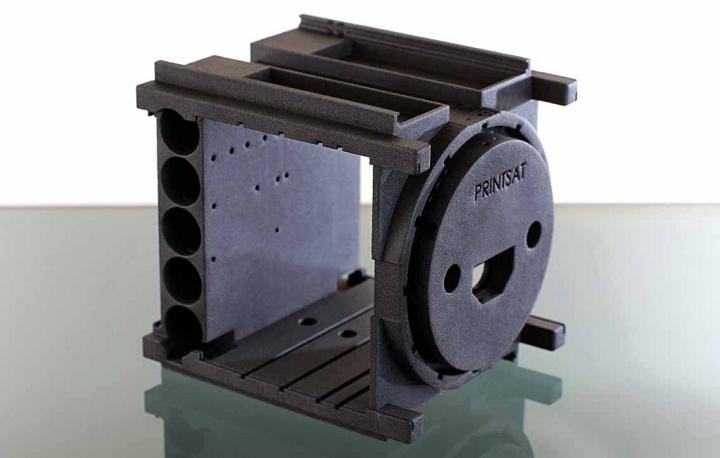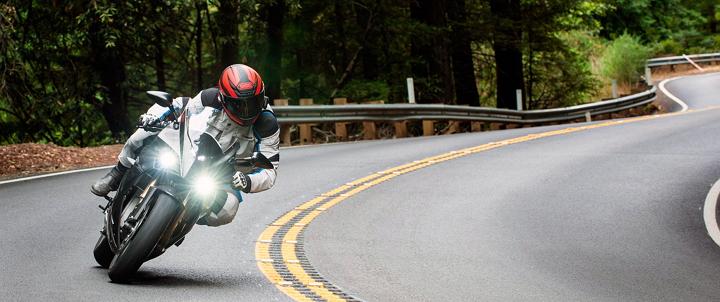Additive manufacturing and proprietary Windform materials were used to build a number of parts of the Cubesat KySat-2 which was launched into orbit as part of a NASA mission out of Wallops Flight Facility.
CRP USA says their Windform materials are ideal to stretch the limits of SLS applications, and they say the fact that Kentucky Space Center, the University of Kentucky, and Morehead State University used the material for end-use parts proves the point.
KySat-2 is the second satellite to be completely designed, built, and tested by students of the University of Kentucky and Morehead University, and the development process for the satellite began in 2011. The KySat-2 featured a 5 megapixel digital camera, a temperature sensor, a 3-axis MEMS rate gyroscope, a 3-axis magnetometer, and a stellar gyroscope. The satellite used RF signals to communicate with a ground station, to receive commands and to transmit data and photos to earth.
Primarily a “proof of concept” device, the KySat-2 was built to demonstrate key technologies like a distributed network computing architecture, power and radio systems, and the “stellar gyroscope” which provided guidance and determined attitudes for the spacecraft.
The CRP process uses high-precision CNC machining and 3D printing technology combined with Windform laser sintering materials to create models of everything from high-tech motorcycles to the Livrea Yacht Italia day-sailer.
CRP says they’ve been key technology partners on several case studies in aerospace, entertainment, motorsports, automotive, and design applications. The company makes use of a customized 3D Systems Vanguard printer – with 100 W laser power, intelligent thermal monitoring, and the latest temperature sensors – to build fully functional parts and bench testing prototypes.
Windform, a reinforced polyamide, was also used to make the Italian electric superbike, Energica.
CRP USA, based in North Carolina, manufactures on-car and wind tunnel components for racing teams.
The CubeSat KySat-2 was launched as part of the NASA ElaNa IV mission, and it included several 3D printed components made with Windform XT 2.0. Parts were printed for the mounting hardware for a camera system, extensions for separation switches, clips to hold the antennas in a stowed position, and a critical mounting bracket for on-board batteries to power the Cubesat.
The company says keys to their process are that there are no design limitations imposed by Windform materials, production and prototypes with undercuts, complex features and internal cavities can be easily produced, the process itself reduces product cycle times and that Windform parts can be plated or painted as needed.
Windform 3D printed parts can also undergo CNC machining, and when they are, it’s possible to bring finish tolerances down to the hundredths of a millimeter in 5-axis milling centers.
Subscribe to Our Email Newsletter
Stay up-to-date on all the latest news from the 3D printing industry and receive information and offers from third party vendors.
You May Also Like
Industrial Giant Ingersoll Rand Leads $19M Round Backing Inkbit’s AI-Driven 3D Printing
Inkbit, the Massachusetts-based original equipment manufacturer (OEM) of multi-material, AI-integrated 3D printers, has closed a $19 million financing round. Ingersoll Rand, a US giant in the industrial equipment sector, led...
3D Printing Unpeeled: Digital FDM Filament for Functional Gradients
Just published in Nature, a paper by a Seoul National University team looks at “3D printing with a 3D printed digital material filament for programming functional gradients.” Sang-Joon Ahn, Howon...
3D Printing Unpeeled: $5000 Cold Spray 3D Printer, Roland DGA & Living Materials
The AeroForge is a $5000 cold spray metal printer for copper made by a student team at Rice University. In a paper for ACS Central Science a team from Nanjing...
3D Printing News Briefs, April 27, 2024: Research, Digital Dentistry, Cycling, & More
We’re starting today’s 3D Printing News Briefs with some research into 3D printed luminescent quantum-dot polymer architectures and free-form laser beam shaping, and then on to an open source 4-axis...

































